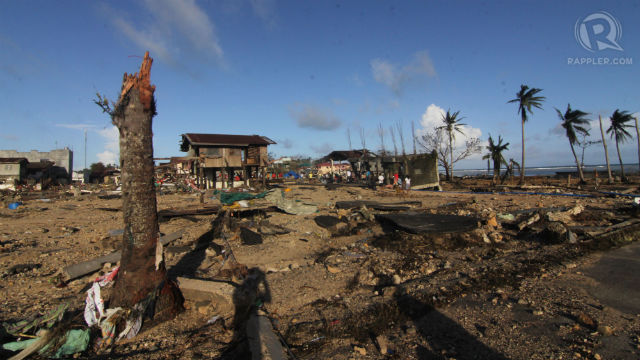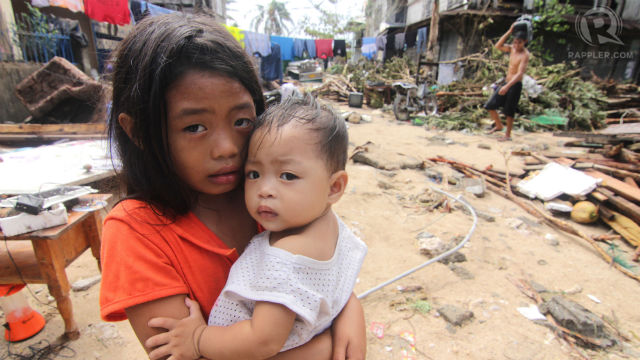SUMMARY
This is AI generated summarization, which may have errors. For context, always refer to the full article.
 In work such as mine, I’ve learned to deal with scenes of disaster by keeping myself a little apart from the situation. Not so much that I don’t understand what is happening, but enough so that I don’t get overpowered with emotion and find it so difficult to work. It helps that in my country, Pinoys are resilient and cheerful, smiles ever on our faces, even after hardship and tragedy. We may not always know how we will recover from a disaster but there’s never-failing hope that we will. That is the indomitable spirit of the Filipinos.
In work such as mine, I’ve learned to deal with scenes of disaster by keeping myself a little apart from the situation. Not so much that I don’t understand what is happening, but enough so that I don’t get overpowered with emotion and find it so difficult to work. It helps that in my country, Pinoys are resilient and cheerful, smiles ever on our faces, even after hardship and tragedy. We may not always know how we will recover from a disaster but there’s never-failing hope that we will. That is the indomitable spirit of the Filipinos.
In the last few disasters, as they get more severe and more frequent, it’s gotten more difficult to keep that part of me impartial and neutral. Not when I can see trauma and panic in people’s eyes at the possibility of another disaster when they haven’t recovered from the latest one yet. I see the emotions much more completely and in turn, it’s beginning to affect me more.
Heartbreak
When Super Typhoon Yolanda (known internationally as Haiyan) demolished parts of my country on November 8, I broke down. The super typhoon, the most severe typhoon in history, wreaked such utter destruction and devastation in areas of the Philippines with strong vulnerabilities, that it was impossible to keep my feelings in check. Now a few days after the super typhoon, as reports, photos and now firsthand accounts begin to slowly trickle in, it feels like little pieces of heartbreak as a more accurate picture of devastation is painted.
The numbers are mind-boggling. Record 235mph winds blew through the area, while 15m storm surges battered the coastline. There is a reported 10,000 dead in one province alone, not counting the other provinces that haven’t been able to communicate anything yet. It took almost 3 days for us to get people on the ground for the assessment and initial response because it was just so difficult to access Leyte and Eastern Samar. The first on the ground report was that Tacloban is now utterly destroyed. I’ve read accounts of people being swept to sea, clutching what they can for 6 hours before being rescued. They are the lucky survivors, I think, when I turn a page and read accounts of regular people pulling the bodies of friends and relatives out of the debris. (READ: Soldier floats at sea for 6 hours, saved by a boy)

Reports from Tacloban City sound bleak and almost dystopic. There are no markets, no shelters, nothing functioning. Department stores were broken into because people are desperate for food and water. Red Cross relief trucks were attacked and mobbed. A curfew had to be imposed because the local government is struggling to mobilize, while at the same time have staff who are personally affected as well. It sounds like scenes from a movie that does not bode well.
I’ve never heard this kind of complete devastation happening from a disaster… not in the Philippines. I feel the desperation of affected families. I don’t see the smiles on their faces or the attempts to lighten the atmosphere. I may not have been in Eastern Visayas but this time, it’s more difficult for me to separate my emotions and I think many feel the same way. So many people are mobilizing, wanting to go down and give out relief and just be there to show the people in Eastern Visayas that we’d like to help them build back.
Anger and frustration
But underlying the heartbreak at so many casualties and so much damage, I am frustrated and so angry that this happened. In a sense, I feel responsible. Did we not do enough to prepare? Could we have prepared for this kind of a typhoon? Are we getting used to this new reality for the Philippines? Am I the only one feeling this sense of responsibility that we failed these people?

The blame on this scale of a disaster cannot be pinpointed on just one person or institution. I strongly feel that there is a point when all the early warning and preparedness of a country will fail when a disaster of this magnitude, a super typhoon stronger than any in history, hits you. There is no precedent to follow, no roadmap of how to recover when one disaster destroys 100% of your area. When something like this happens and questions arise about blame, about next steps, about lessons learned, about roles and responsibilities, we have to take collective stock of what was done, what must be done and what we have yet to do. And by collective, I mean that it is on all of us to be responsible for how many people have died in these disasters.
What choices are the world making now that is affecting how the environment is changing? What steps are we doing to make sure that we adapt to the changes in our environment? What steps are we taking to prepare for the worst outcomes of these changes? What responsibility do we take upon ourselves to minimize the results of the worst outcomes on the people who have the most to lose?
Changing climate
As the unlucky recipient of three of the worst and most fatal disasters in the last 3 years, the Philippines is living proof that smaller countries bear the brunt of these climate changes and proof of the world’s inactions. We forget that just because we live in different countries, it doesn’t mean we don’t exist in the same world. The actions of one reap the awesome consequences to another.
In an alternate world, a wealthy country could have just been in the same position as the Philippines finds itself in year after year, but by virtue of luck and fortune in location and resources, these countries escape practically unscathed from our troubles. It could very easily have been another country in the position we find ourselves in now.
Once again, by coincidence, Yolanda falls during the climate change talks happening in Warsaw, the 19th one of the UN Framework Convention on Climate Change. Last year, it fell during Typhoon Bopha, and the Philippines through lead negotiator, Yeb Sano, made a passionate entreaty for positive changes; recognition and actualized support that wealthier countries support smaller ones that struggle with the brunt of climate change. If these climate talks pass by with no real changes, what will help us adapt? If the glaring proof of utter devastation and destruction can’t change the minds of developed countries, then what will? If nothing happens, then these talks are a sham, a way to feed the conscience of wealthier nations as they give this tiny and inconsequential handout being offered from their tables. (READ: ‘Stop this climate crisis madness‘)
What I now become increasingly sure of is that we will continue to experience these disasters, in scales and frequencies that will push our limits of what is normal and what is extreme. What I am increasingly sure of is that these large-scale disasters will shift paths and hit areas previously untouched by these types of disasters. And what I am absolutely sure of is that the people it will affect are those who are most at risk and with the most vulnerability, and therefore the most to lose when affected by a disaster.
As Yeb Sano said just now during the opening session of the climate talks in Warsaw, “If not us then who? If not now, then when? If not here, then where?”
So what now? – Rappler.com
Gabriela Luz is the humanitarian program officer of Oxfam Philippines. She is currently in Bohol where she leads Oxfam’s Bohol Earthquake Emergency Response team. She has been working in the humanitarian field, for emergencies and disaster risk reduction, since Typhoon Ondoy in 2009.
This article first appeared in the author’s personal blog and is reprinted here with her permission.
iSpeak is a parking space for ideas worth sharing. Send in your contributions to move.ph@rappler.com.
Add a comment
How does this make you feel?
There are no comments yet. Add your comment to start the conversation.